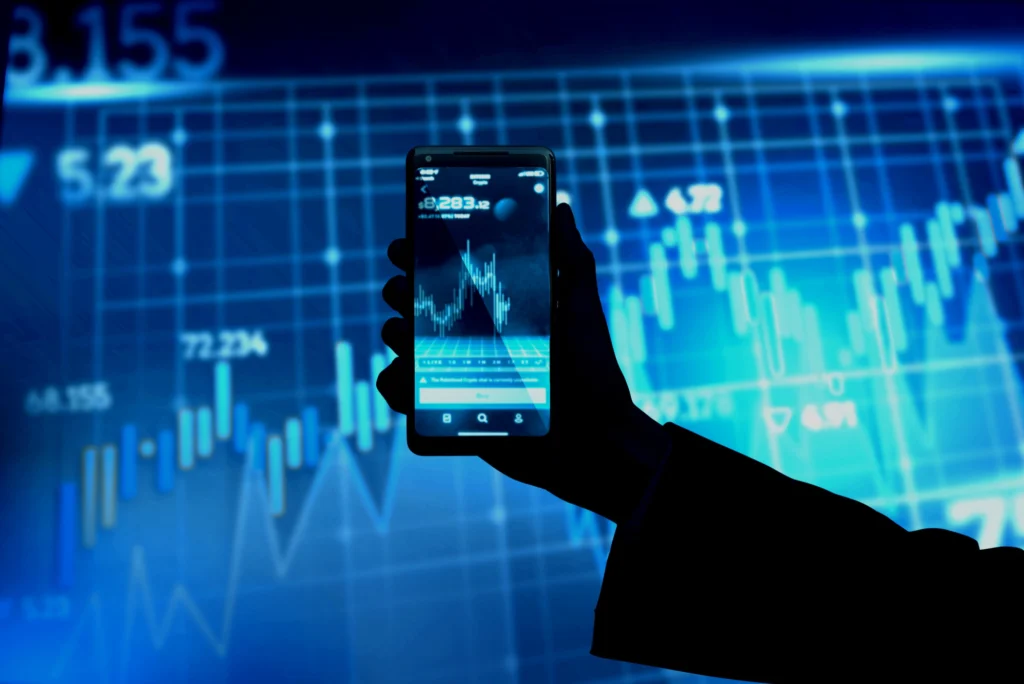
What is AI trading?
Execution of your trades with the help of AI is called AI Trading. AI models and machine learning have improved the trading experience of new as well as experienced traders. As compared to manual trading, the buying and selling of financial assets have become easier. How? Let’s get into the blog and learn about AI trading!
How AI Trading works?
AI-powered algorithms and tools can analyze huge amounts of data that a human being cannot do. Real-time market data and patterns can be identified by these AI techniques easily. Also, these bots can detect market trends and manage the trades without any hassle. Users can set conditions for trades while AI can oversee the opening and closing of these trades. Also, the predictive modeling of AI helps investors forecast future market trends and patterns. It also assists them during the news events. It reduces the research and screen time of investors who wait for hours to open and close trades. The decision-making has been improved as AI can find and solve issues in microseconds. In this way, AI trading manages and mitigates risks accurately in comparison with humans. What are the benefits of AI trading for small investors?
Benefits of AI Trading for Small Investors:
As we have discussed, AI trading monitors trades efficiently, which means that an AI trader can increase the trading experience of small investors. Additionally, AI trading safe practices save traders time as they no longer have to sit in front of their PCs to manage trades. It not only saves time but also helps in detecting patterns of market movements. An AI trader proficiently supervises trades during unexpected news events. The predictive modeling of AI trading has enhanced the decision-making and trading skills of investors. With all these benefits, we can conclude that AI trading can handle risks and increase users’ profitability.
Types of Trading:
AI Trading VS Algorithmic Trading
AI Trading and Algorithm Trading are considered the same but their approaches are quite different. Algorithm trading is also known as algo trading. How is AI trading different from algo trading? Algorithm trading works on predefined rules and mathematical models. While AI Trading works on machine learning and deep learning concepts. Algo trading executes trades on historical data and specific market conditions. On the other hand, AI trading analyzes large amounts of data, identifies patterns, and adapts strategies. AI trading executes trades based on decision-making power based on the run time solutions.
Algorithmic Trading VS High-Frequency Trading
Algorithm trading and High-Frequency Trading (HFT) are both automated trading strategies but they differ in many ways. These two differ in scope and execution speed. Algorithm trading works on pre-defined market conditions and models while HFT is a subset of algo trading which executes multiple trades with high speed. HFT tries to take advantage of tiny price changes that happen in a very short time.
AI Trading VS Algorithmic Trading VS High-Frequency Trading
AI trading, algorithmic trading, and HFT use technology for buying and selling financial assets. But these trading differ in how they operate. AI trading uses artificial intelligence and machine learning to analyze vast data and make trading decisions automatically. Algo trading operates on pre-set rules and algorithms to execute trades based on various market signals and data points. HFT is a type of algorithmic trading that focuses on executing a large number of trades in milliseconds and microseconds. All these three methods work to enhance trading efficiency and profitability.
Risks of AI Trading and How to Mitigate Them
With trading comes risks. Although investors enjoy the pros of AI trading there are some cons as well. AI trading is totally dependent on AI which means it lacks human judgment. AI depends too much on historical data but we know that the financial markets are always changing. These markets are unpredictable which can lead to risks and losses. These volatile financial markets can cause poor decision-making due to unexpected changes in events. Also, the lack of transparency can cause uncertainty, making it difficult to understand the algorithms and how they make decisions. There are chances that AI make strategies that do not align with trader’s preferences. Lastly, AI trading systems can face cybersecurity risks like hacking, data breaches, and other attacks. Bad actors might try to manipulate these systems or disrupt them to cause chaos in the market.
To reduce the risks of AI trading, it’s important to use a variety of data sources beyond just historical data. Human oversight should be added to help AI make decisions, especially during uncertain market times. Algorithms should be clear and understandable to build trust. Strong measures need to be in place to manage risks, including protecting against hacking and data breaches. AI models should be constantly tested and adjusted. Traders should also be educated about AI and its risks, and strategies should be tailored to fit their preferences to avoid potential problems. These steps aim to make AI trading systems more reliable and secure while maximizing their advantages.
Conclusion:
AI trading is a big step forward in finance, using advanced tech like AI and machine learning to automate and improve trading. It helps small investors by watching trades, saving time, and making better decisions with predictive models. But it has risks like relying too much on old data, unpredictable markets, and cybersecurity threats. To handle these, using more types of data, being clear about how algorithms work, and strong risk management can help. These steps let investors make the most of AI trading in today’s complex financial world.
